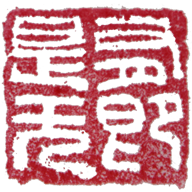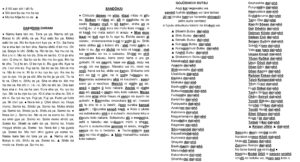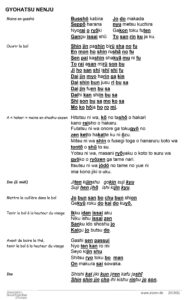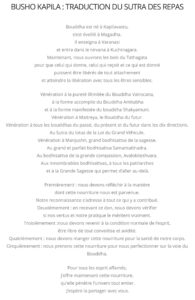This post is also available in:
Français
Italiano
Deutsch
Nederlands
The School

Acquire a trade, a means of expression
General presentation
1. Teaching
The School teaches everyone the sumi-e painting method of internationally renowned Master Beppe Mokuza (see Who are we? teacher biographies). Sumi-e is traditional Japanese Indian ink painting, the Japanese term “sumi” meaning black ink, “e” meaning paint.
In addition to practicing sumi-e painting, the School teaches professional trainees the didactics and pedagogy specific to the teaching of this painting method.
Courses are given in short workshops and workshops (here called seminars) where all audiences and all levels are grouped together. Teaching is individualized, with each student progressing at his or her own pace, although professional trainees must reach a set level at the end of each year of the course.
2. The professional audience
The School is open to anyone with a particular skill or interest in painting and/or teaching.
It is particularly aimed at people who wish to make teaching sumi-e their profession, artists who wish to acquire new skills in ink, and people affected by this practice who wish to deepen their knowledge in a setting that supports their learning over time.
The audience includes :
- People who are unemployed or still employed, but who are planning to retrain, or who are already teachers and/or have completed a Fine Arts course;
- The painters;
- People with a background in art therapy, not necessarily visual arts, who wish to use sumi-e in their therapeutic practice.
- People who have already attended one of the School’s workshops as part of their leisure activities, and who thanks to this experience see in the complete curriculum the means to reap all the benefits of perfect sumi-e practice. Experience shows that the desire to teach generally emerges during the course.
The School offers 2 curriculum formats:
- The complete 4-year “Painting and teaching sumi-e painting” course, which covers all the key pictorial motifs of sumi-e and enables advanced students to be taught;
- A 2-year“Animateur d’ateliers de peinture sumi-e” short workshop, which covers bamboo and orchid motifs, and enables us to teach beginners. This course is designed for jobseekers who can apply to France Travail for funding of their training as part of a rapid return to employment.
It should be noted that neither VAE, nor equivalence, nor certification for part of the skills are planned.
In addition to the traditional opportunities offered by the French Ministry of Education and the local civil service, painting teachers can also work as service providers or employees of cultural centers or local cultural associations, and/or as freelancers organizing evening classes and workshops. These activities can be pursued in a variety of ways: as a self-employed entrepreneur, as an employee or service provider of an association, as an employee of a cultural center, etc.
Artist-teachers can sell their original works and related products.
3. Leisure audience
The school is open to all, including sumi-e beginners and those with no previous experience of the visual arts. Recreational courses are shared with professional courses. It’s enriching to share experiences, and beginners will gain a better appreciation of their future skills by watching their fellow students practice, while the latter can occasionally supervise the beginners’ practice as a didactic and pedagogical exercise.
Young people with attention and concentration problems can particularly benefit from sumi-e practice, as their problems can be spontaneously resolved, at least in part, simply by the precise work of repeating the models, while enjoying the satisfaction of the works obtained.
These young people can be welcomed at the Gyogenji Zen temple in Costigliole d’Asti (AT, Italy) for a period of social reintegration, including sumi-e practice.
4. The corporate audience
Sumi-e painting is a meditative practice that follows precise rules.
The meditative aspect presupposes sustained attention and concentration in practice, with priority given to the inner attitude, body posture and tracing gesture.
Rules frame and support the practice.
Learning takes place by repeating the reproduction of models. Awareness of the inner attitude required is progressive during this repetition, and leads to a profound spontaneous letting go of preconceived ideas about what is required by the teacher, about the result obtained, and ultimately about oneself.
This demanding practice requires us to surpass ourselves, but is gratifying on the one hand for the results obtained, and on the other hand and above all for the inner change that takes place, with better discernment and a greater ability to act with awareness.
These characteristics make sumi-e a skilful way of preventing and improving mental health in the workplace. The French government has made mental health in the workplace a national cause: https: //travail-emploi.gouv.fr/sante-mentale-au-travail-une-charte-dengagement-portee-par-lalliance-pour-la-sante-mentale
4.1. Individual stress
In the case of prolonged stress.
The practice of sumi-e provides the keys to regulating and eliminating stress in everyday life, through spontaneous awareness of one’s own behavioural mechanisms:
- Stay calm under pressure.
- Manage negative thoughts and emotions.
- Strengthen resistance to stress.
And beyond:
- Managing work pressure and organizational change.
- Defuse conflict in professional and personal relationships.
The active means of sumi-e practice for managing and overcoming stress:
- Breathing: the trace is drawn on a long exhalation, followed by a short spontaneous inhalation.
- The body: the posture is anchored, the back held, the arm free, the brush vertical.
- Expressive lines: the sheet of paper is an instant mirror of the psyche. It reveals attention, concentration and emotions.
- Repetition, which leads to letting go.
4.2. Team spirit
In the context of a high-stakes project, which must bring together people who do not share the objectives or values underpinning the project.
Sumi-e practice looks easy from the outside. In reality, to achieve the sophisticated lines of even the simplest models on paper, you need to really let go of your preconceived ideas, to change your attitude.
Sharing a new activity that’s so different from the usual ones, facing unforeseen difficulties together in an unfamiliar context, creates or profoundly renews relationships between team members.
The active means of sumi-e practice to generate team spirit:
- Integrating new employees: demonstrating the importance of their well-being.
- Increasing individual motivation: giving people the opportunity to surpass themselves in a caring environment – communicating shared values through sumi-e values
- Communicate differently.
- Create or reinforce group cohesion: the emotions generated by sumi-e practice, experienced together.
- Develop collective intelligence: everyone expresses themselves individually with their own pictorial composition, but at the service of the group as a whole.
- De-escalate conflicts: negotiate the final composition, the interactions between the elements contributed by each participant, playful situation outside hierarchical relationships
4.3. Managerial conflicts
Conflicts can arise from :
- Lack of understanding of each other’s needs and expectations.
- Difficulty expressing themselves.
- Poor knowledge of the employee’s personality and
skills.
In the sumi-e short workshop, all beginners find themselves equally lacking in skills, and have to go through the same difficulties. All that was known elsewhere, as well as relationships of influence and power, are inoperative.
practice opens us up to ourselves and to others, enabling us to spontaneously readjust our relationships.
The active means of
sumi-e practice for managing managerial conflicts:
- Opportunity for open and honest communication
, by discovering the other outside the hierarchical relationship, which
can lead to solutions to structural problems. - Acknowledging conflict, by
learning to accept what is, like the hard line on the paper. - Facilitation by a mediator: the
sumi-e appears as an indirect impersonal mediator, explaining
emotions, creating a space outside professional issues and provoking
personal openness to oneself and to others.
5. People with disabilities
The School strives to include everyone in its activities, in compliance with the February 11, 2005 law on equal rights and opportunities, participation and citizenship for disabled people.
People with missing upper limbs or hands, severe motor and sensory deficits of the upper limbs, hands, torso and head cannot be admitted to the workshop, nor can blind people.
The sumi-e painting method requires precise body posture, with the pelvis tilted forward, shoulders clear and back straight, ideally standing (to develop body awareness) in front of a high horizontal table, but it is possible to practice seated while preserving the essential elements of posture.
Mental deficits must not affect the interpersonal relationship between teacher and trainee, which is the basis for the transmission of sumi-e practice.
It is possible to welcome people with learning and language deficits (as sumi-e teaching is practical and oral), and/or deficits leading to difficulties in integrating into a group, or a lack of attention or movement coordination. The practice of sumi-e can help these people to reduce the impact of these deficits.
A rest area is provided for people who are prone to fatigue as a result of their disability.
6. The professional program
Teaching takes place in seminars, up to more than 200 hours per year (see detailed program). Practice is based on a set of models specifically designed to progress over the duration of the course. A cycle of theoretical courses covers all the roots of sumi-e: historical, philosophical, cultural, etc., as well as technical points.
To take account of trainees’ remote location, the School favors long seminar formats, and to facilitate the integration of training into personal life, trainees can choose from among the workshops on offer. Training credits are awarded for each workshop attended, and the end-of-year exam can be taken when the credits accumulated correspond to all the skills required. The duration of training is therefore individualized.
As the program is common to all trainees, while each is at a very different point on his or her path, an individual follow-up program is part of the curriculum, to support the effort of personal practice between two seminars. Each student is allocated 30 hours of follow-up per year. This involves reviewing and annotating students’ work between seminars, to support their personal practice. The rate at which work is submitted is agreed with the teacher, and is typically weekly.
The School offers students the opportunity to use a document management system, to submit work, receive annotations and keep a history of exchanges with the teacher, all in a private area dedicated to each student.
the same document management system contains a vast library of model photos, videos of models being painted, lectures given during seminars, reference articles and books in the public domain.
7. Leisure long and short workshops
Sumi-e lessons are given in short workshops reserved for leisure activities and in workshops (called seminars here) shared with professional trainees ( see detailed program).
The main sumi-e motifs (the four nobles: bamboo, orchid, plum blossom and chrysanthemum) are approached progressively, one after the other, at your own pace. The progression of patterns is the same for all, with bamboo studied in detail before any other motif.
8. Interventions in the workplace
The workshop is tailor-made.
Registration
1. Professional curriculum
1.1. Course
- A cover letter ;
- An interview with Beppe Mokuza Signoritti and Alain Plaignaud, respectively Honorary President and President of the School.
1.2. Time to access training
The earliest seminar date following registration, which is convenient for the trainee and offers an available place, is the deadline for accessing the training. Any training course can start at any seminar in the program, thanks to our individualized training approach.
1.3. People with disabilities
A pre-registration interview, conducted by the disability referent, enables us to methodically address the various situations encountered during the course of activities, where the person could find him/herself disabled. At the end of the interview, a decision is taken on the feasibility of compensating or adapting the environment, in coordination with the teaching and logistics teams.
1.4. Preliminary documents
Here are the documents you need to read before enrolling at the School:
1.5. Rate
- Complete 4-year course“Painting and teaching sumi-e painting“: €10,400, or €2,600 per year.
- 2-year“Sumi-e short workshop leader” course: €5,200, or €2,600 per year.
- Teaching sumi-e during seminars (over 200 hours per year);
- Optional meditation during seminars (approx. 100 hours per year);
- Follow-up of personal sumi-e work (30 hours per year) ;
- Seminar lectures (6 hours per year) ;
- Photos, videos and documents on traditional Chinese and Japanese cultures in relation to painting;
- 1:1 scale models;
- Sumi-e materials for seminars (inks, paper) ;
- Meditation material for seminars ;
- Rental of classrooms ;
- Dojo rentals ;
- Tea, coffee, cookies after morning and lunch and during breaks;
- School management (no application fees, except in the case of financing).
1.6. Training financing
The school is Qualiopi certified, which opens up the possibility of various forms of financing, see below.
If you wish to obtain funding for your professional training, please contact your OPCO or France Travail, depending on your situation, and fill in a training funding application form, in conjunction with the International School of Sumi-e.
Registration of the certification with the Répertoire National des Certifications professionnelles (RNCP) is underway, and it is not yet possible to use the Compte Personnel de Formation (CPF).
Skills Operators (OPCO)
Until 2019, the entire vocational training contribution was collected by the“organisme paritaire collecteur agréé ” (OPCA), renamed OPCO(opérateurs de compétences). Since 2021, the contribution has been paid to Urssaf.
Among other things, OPCOs are responsible for financing apprenticeship and professionalization contracts, in line with the funding levels set by the professional branches.AFDAS is the OPCO for the cultural sector.
There are various OPCOs, and whether or not you belong to one depends on your collective agreement.
France Travail
France Travail finances schemes to adapt or develop skills: for jobseekers,Aide Individuelle à la Formation (AIF), and for employers,Action de Formation Préalable au Recrutement (AFPR), Préparation Opérationnelle à l’Emploi Individuelle (POE I).
Preparation Opérationnelle à l’Emploi Collective (POEC) aims to provide rapid access to sustainable employment. It lasts a relatively long time, up to a maximum of 400 hours, and includes a period of immersion in the company. A framework agreement is signed between the skills operator (OPCO) and France Travail, following a call for projects launched by France Travail. AFDAS projects to follow.
Personal Training Account (CPF)
The Personal Training Account (Compte personnel de formation – CPF) enables all working people, from the moment they enter the job market until the date on which they claim all their pension rights, to acquire training rights that can be used throughout their working life.
Since 2020, employees who have worked half or more of the legal or conventional working time over the whole of the previous year have acquired 500 euros per year for training (capped at 5,000 euros).
For self-employed workers, the CPF is topped up by 500 euros per year of employment, up to a maximum of 5,000 euros for professional activities carried out in the previous year. To be eligible for funding, self-employed workers must be up to date with payment of their professional training contribution (CFP).
As regards the need to obtain the employer’s agreement, two situations must be distinguished, bearing in mind that, in all cases, the training must be chosen from among those eligible for the Personal Training Account:
- training financed under the CPF is not subject to the employer’s agreement when it is taken, in its entirety, outside working hours;
- when all or part of the training takes place during working hours, the employee must apply to his or her employer for a leave of absence.
To be eligible for the CPF, a training course must appear in the Répertoire national des certifications professionnelles (RNCP). The School is currently in the process of applying for registration of its professional certification.
2. Workshops and leisure workshops
The hobby classes are open to all, and no drawing or painting skills are required.
If you are registering for the first time, please use the Contact form, specifying which date is most convenient for you. If a date is available, you will be asked to pay in advance using one of the payment methods offered, in order to reserve your place.
Thereafter, booking requests will be made by e-mail.
The fee is indicated in each workshop or workshop in the Calendar. It includes :
- Teaching;
- Supplies ;
- Coffee/tea breaks ;
- Depending on the workshop: meals, accommodation.
It does not include the €30 annual subscription to the International School of Sumi-e.
3. Request for study of an intervention on site
Thank you in advance for completing the Contact form, indicating the context of your request.
An initial meeting will provide a framework for the mission.
Seminar schedule
A typical day
The daily program varies according to the workshop. A typical complete program is as follows:
- 6:45 Welcome meditation participants (7:45 on Saturday)
- 7:00 Meditation (optional) (8:00 on Saturday, with Beppe Mokuza by Zoom)
- 8:30 End of meditation (9:45 on Saturday)
- 8:45 Breakfast (10:00 on Saturdays)
- 10:00 Sumi-e practice (10:45 on Saturday)
- 13:00 Lunch
- 15:00 Sumi-e practice
- 18:00 End of practice
- 18:15 Cleaning and tidying up
- 19:00 Meditation (optional)
- 19:45 End of meditation
- 20:00 Dinner
- 20:30 End of the day
See details of the organization of each workshop in the Calendar.
Home
Trainees are welcomed either the afternoon before or the morning of the first day of the workshop. This is specified in the workshop schedule.
Locations
Various information on the workshop location is available by clicking on the workshop title at the bottom of the workshop details page.
Direct access:
L’Atelier de l’Encre Poétique short workshop
Depending on the location, this information may include :
- Full address.
- Presentation (using texts and photographs supplied by the organization running the venue).
- Access by public transport and car.
- Mealtimes.
- Accommodation arrangements.
- etc.
Meals
Where possible, meals are prepared on site using fresh organic, vegetarian and generally gluten-free produce. This information is given in the seminar details.
Breakfast generally follows the Zen ritual, and consists of rice porridge with vegetables (see rituals below).
Please clearly indicate any allergies or dietary restrictions in the appropriate box on the seminar registration form.
Zazen (optional)
Zazen 座禅 literally means “sitting meditation”. Touching, through correct sitting posture, the pure, original spiritual part that exists within each of us, often obscured by our thoughts and the emotional storms that trouble us. ” If you come to understand that zazen is the great gateway to the law, you will be like the dragon entering the water or the tiger returning to the dense forest “. (Master Dogen Zenji, 13th century)
For more information, see for example What is Zen?
Rituals and sutras (optional)
The spirit in which the workshop days unfold is that of right attention and concentration. To develop this spirit, we ask you to restrict movement and noise to just what is necessary for practice, excluding break times. We also ask you to adhere precisely to the timetable for each activity.
Attention to self and others is also developed through harmonization with the group, in all activities and in particular through optional participation in Zen rituals at specific times of the day.
These optional rituals are :
- The meditation framework itself;
- The short ceremony following the meditation;
- The beginning and end of the morning meal;
- The beginning and end of lunch in workshops led by Beppe Mokuza Signoritti.
The above-mentioned meals are taken in calm and silence so as to maintain a concentrated and attentive mind, as an extension of the other two workshop activities (sumi-e and zazen).
During the ceremony, at the beginning and end of the above meals, sutras (ancient Chinese or Japanese texts describing Zen philosophy and practice) are chanted. The original texts and their translations are available on the School’s website and on request. Singing in a group always meets the objective of attention and concentration through harmonization with the group.
The above meals are eaten in an oryoki, a bowl wrapped in cloth at the end of the meal. The bowl represents the right measure, in the spirit of letting go. A bowl is provided for trainees who don’t have one.






